Optogenetic fMRI
Optogenetics is an emerging neuromodulation method employed in neuroscience that uses a combination of techniques from optics and genetics to control the activities of specified subset of neurons in living animals. The combination of optogenetics and fMRI provides a powerful tool to investigate how activity in one region of the brain causally affects activity in distant regions via long-range connections. Therefore, optogenetic fMRI technology was developed in BISP lab and was used to study long-range circuit, rsfMRI neural basis and auditory processing.
Long-range Circuit
In one of our study, optogenetic fMRI is used to study frequency specific optogenetic recruitment of evoked responses in the somatosensory thalamocortical circuit, results show low-frequency stimulation at 1 Hz in particular elicits long-range activity to the other sensory cortices.
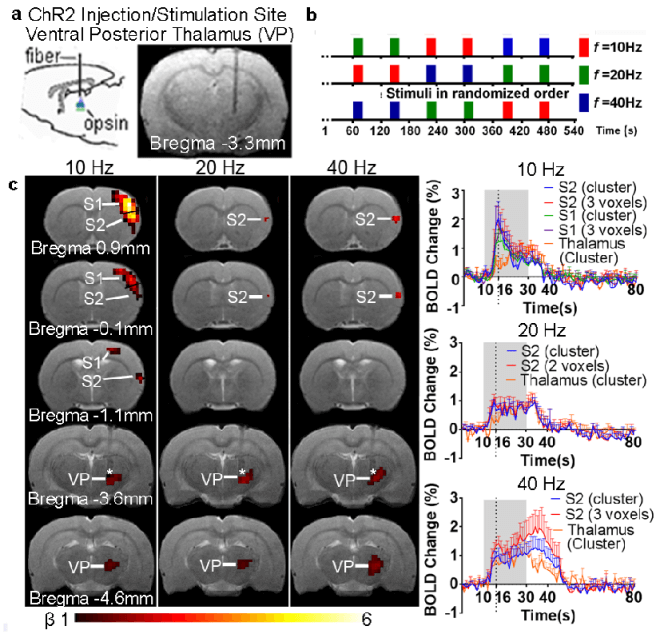
It reveals differences between paralemniscal and lemniscal somatosensory thalamocortical circuit, results show that stimulation of Paralemniscal Pathway (POm) and Lemniscal Pathway (VPM) Activates Sensory-visual and Sensorimotor Regions, respectively as shown below.
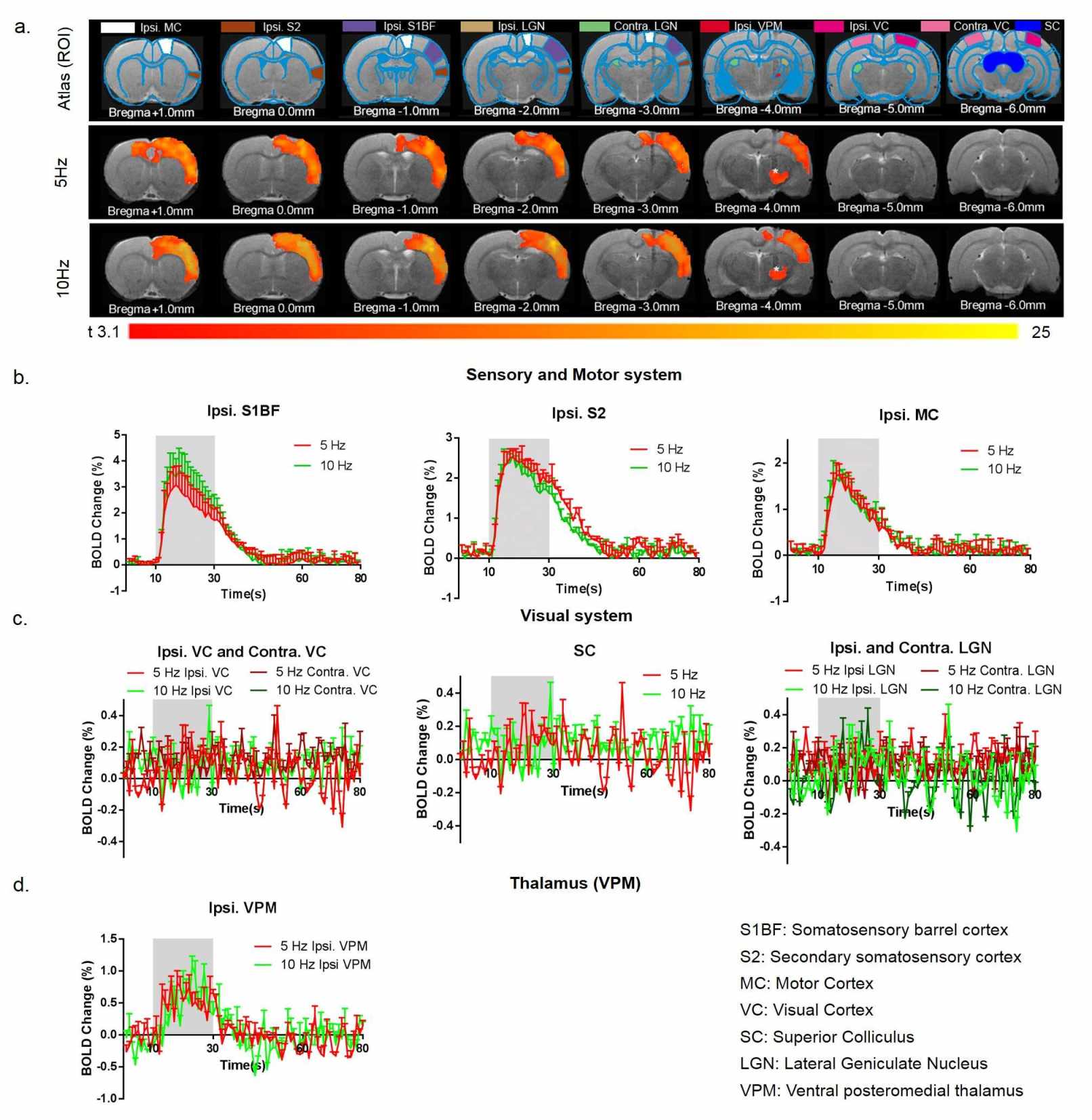
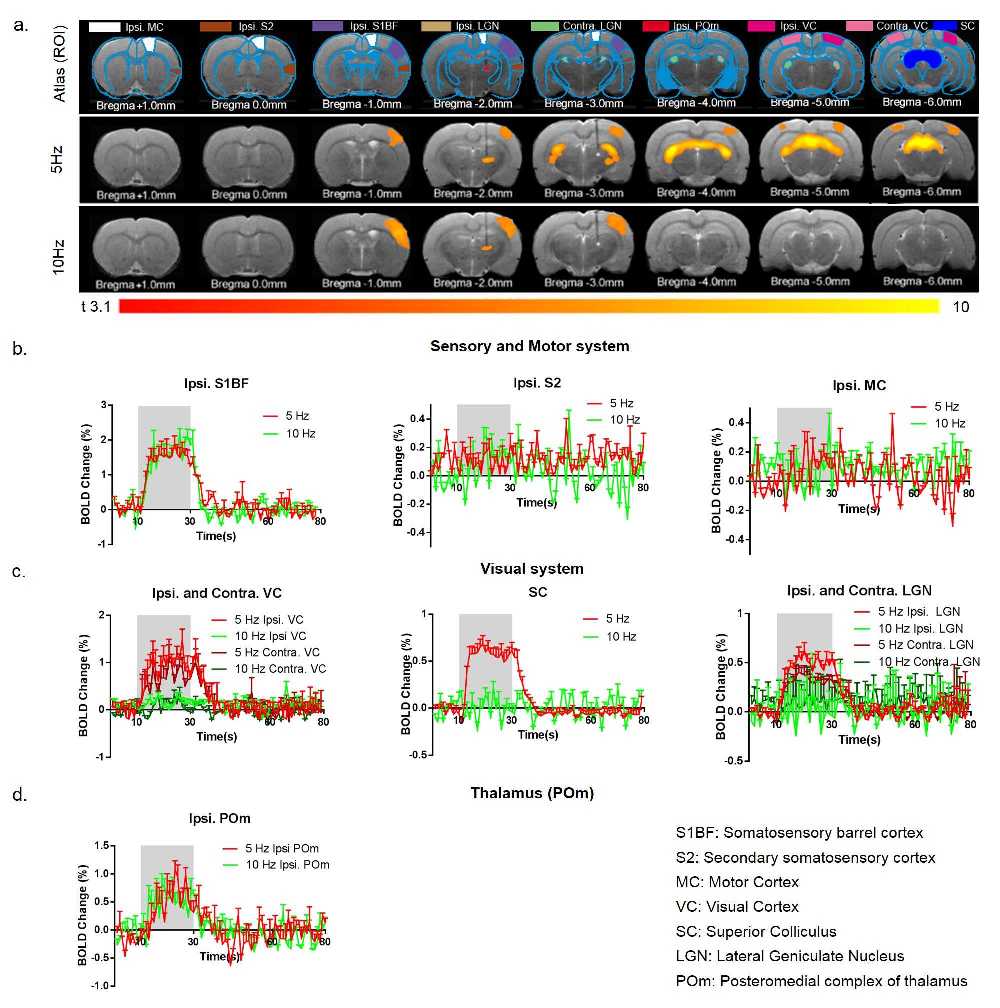
Resting-state fMRI neural basis
Resting-state fMRI reveals that low frequency optogenetic stimulation of Dentate Gyrus enhances brain functional connectivity.
Functional connectivity maps, power spectrums and comparison of inter-hemispheric functional connectivity of V1, A1 and S1 before and after low frequency (1Hz) optogenetic stimulation shows functional connectivity strength increased after low frequency stimulation, and larger low frequency (~0.01Hz) contributions to rsfMRI signals were observed after low frequency stimulation.
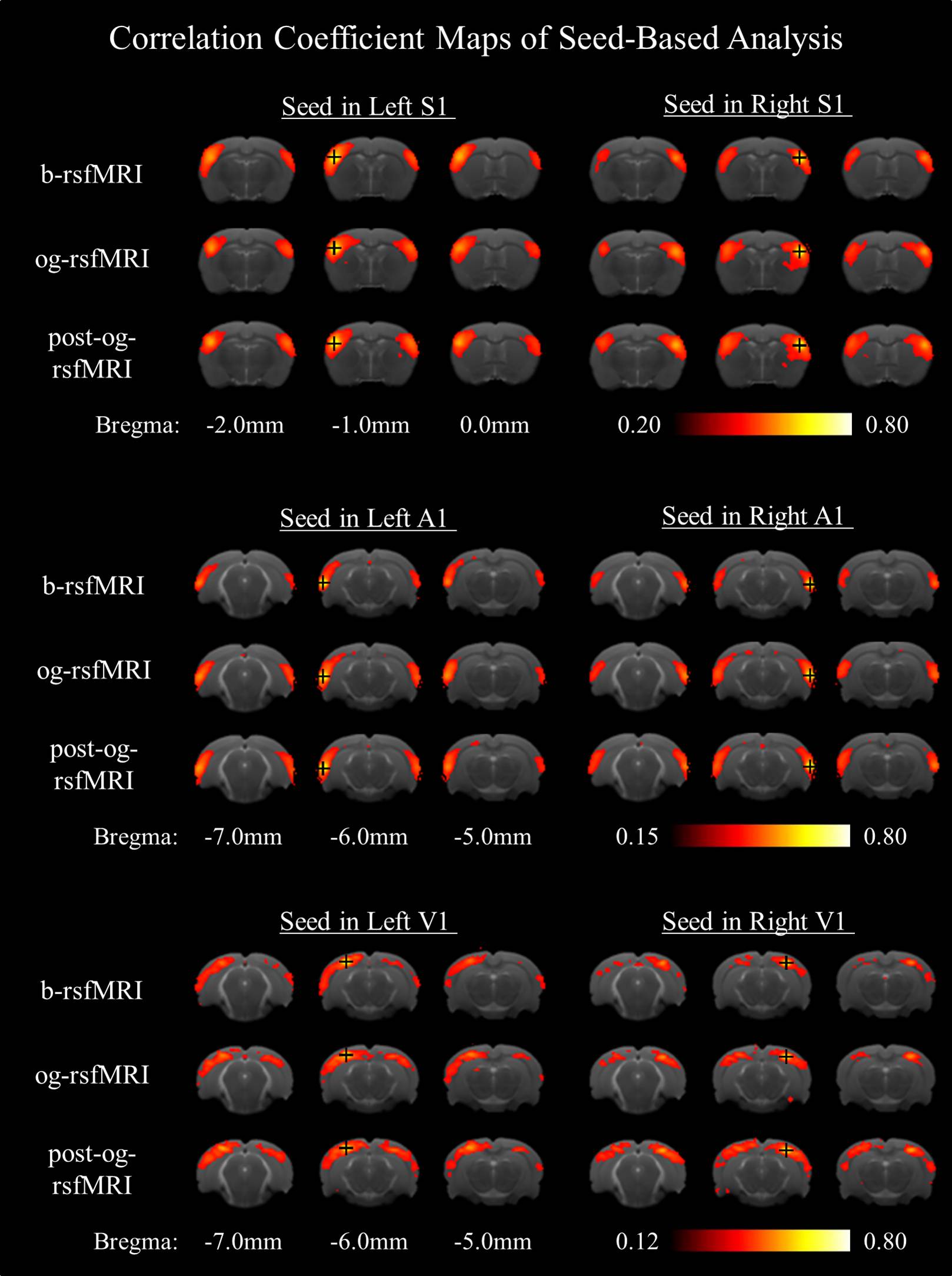
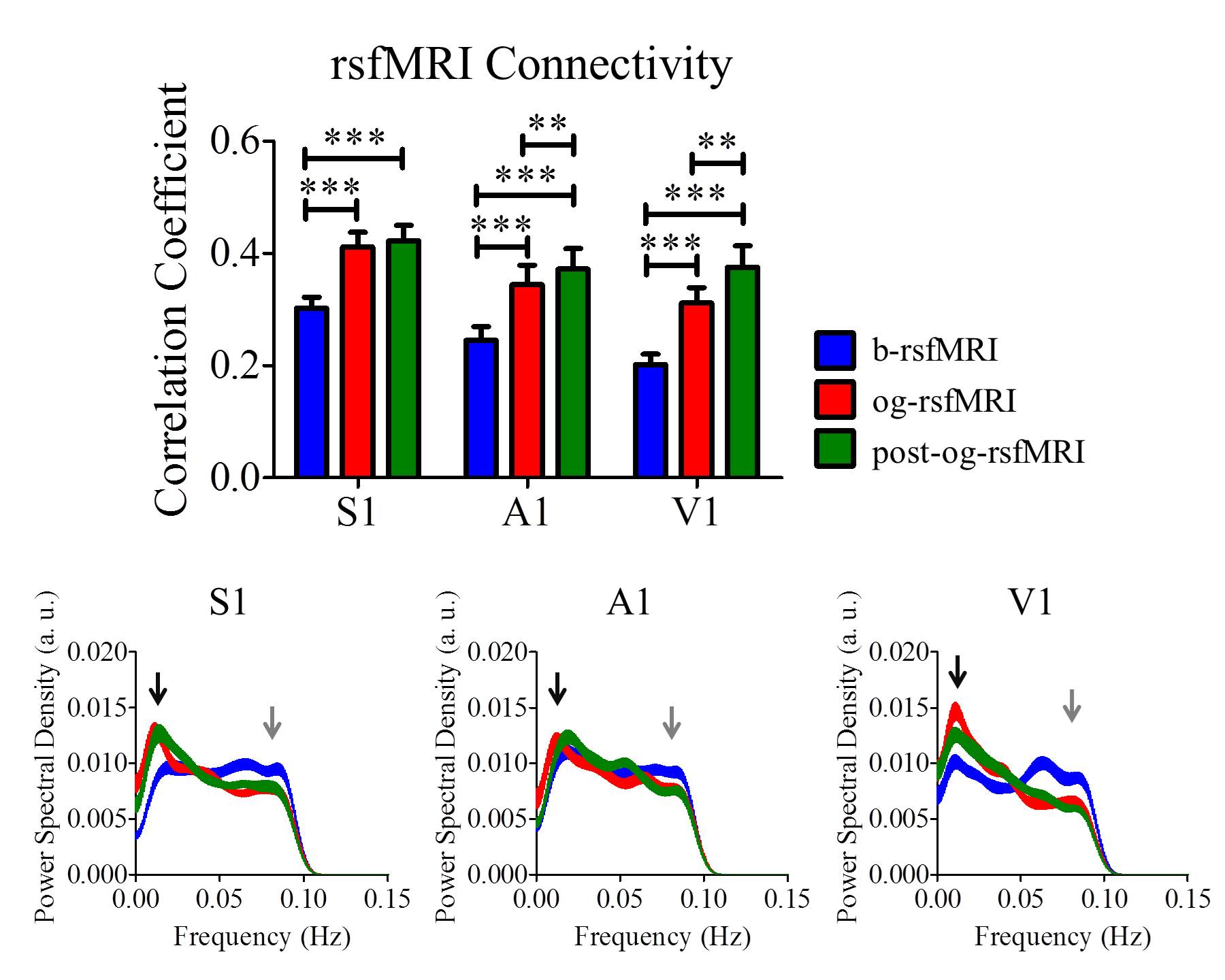

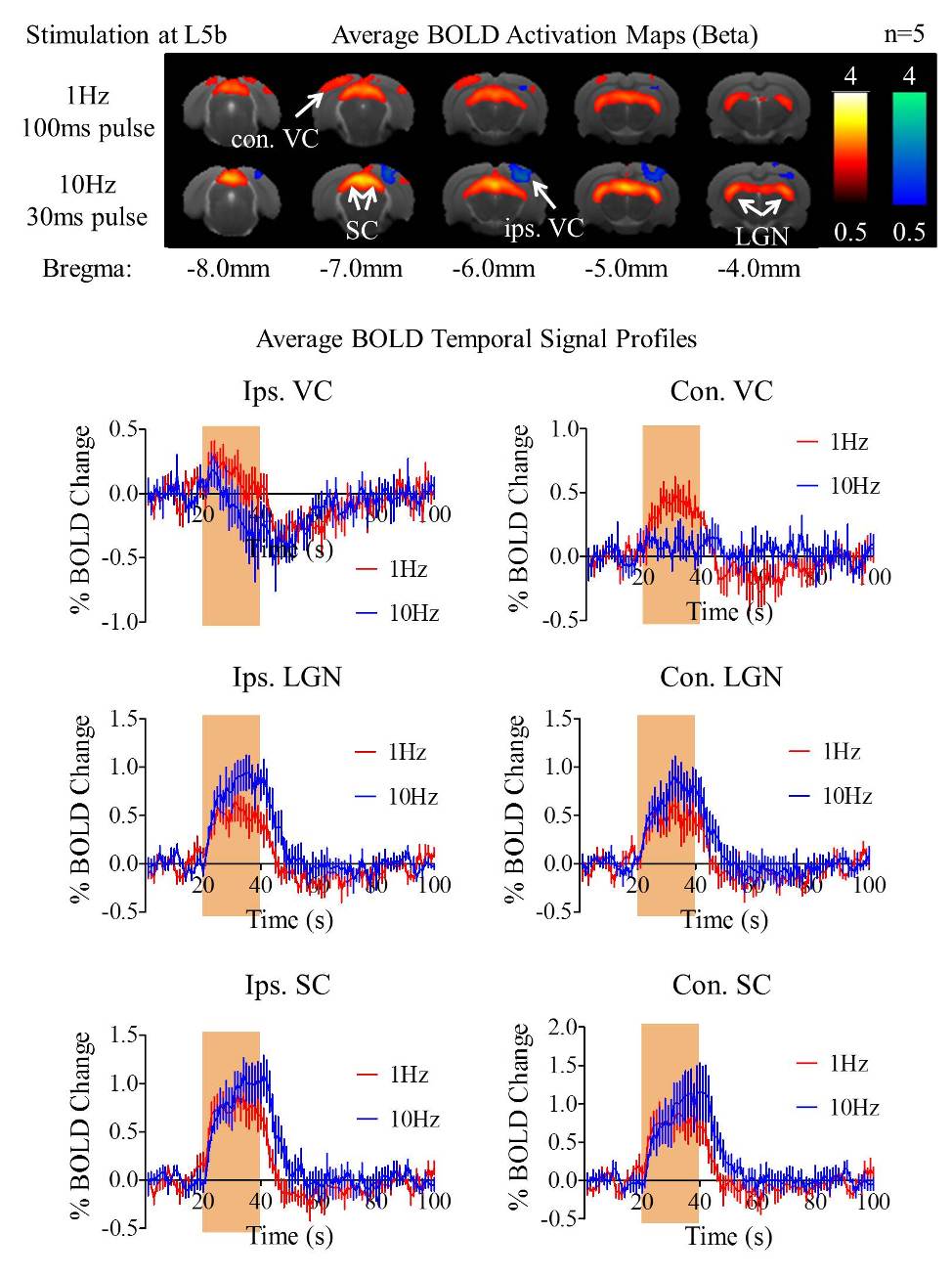
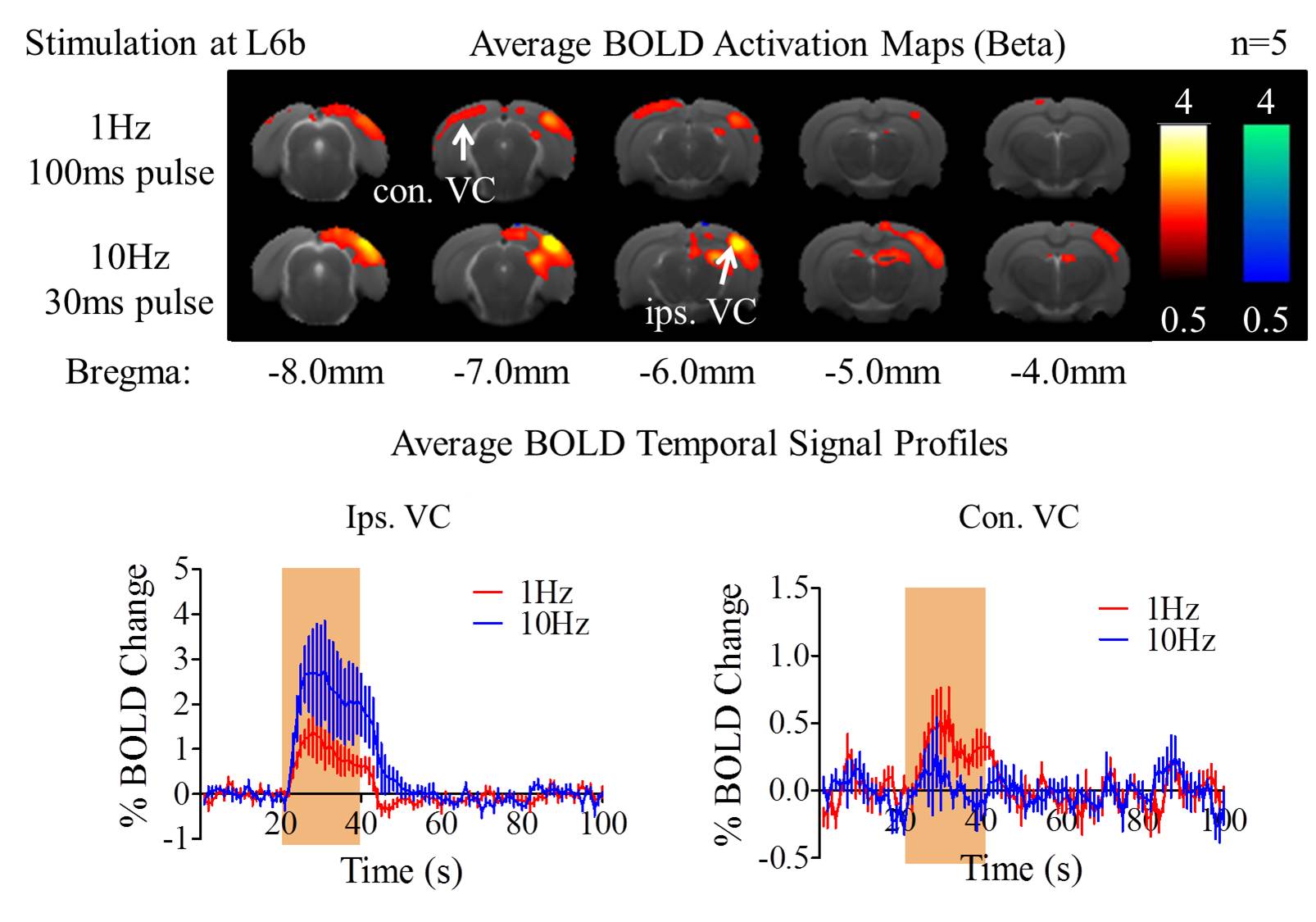
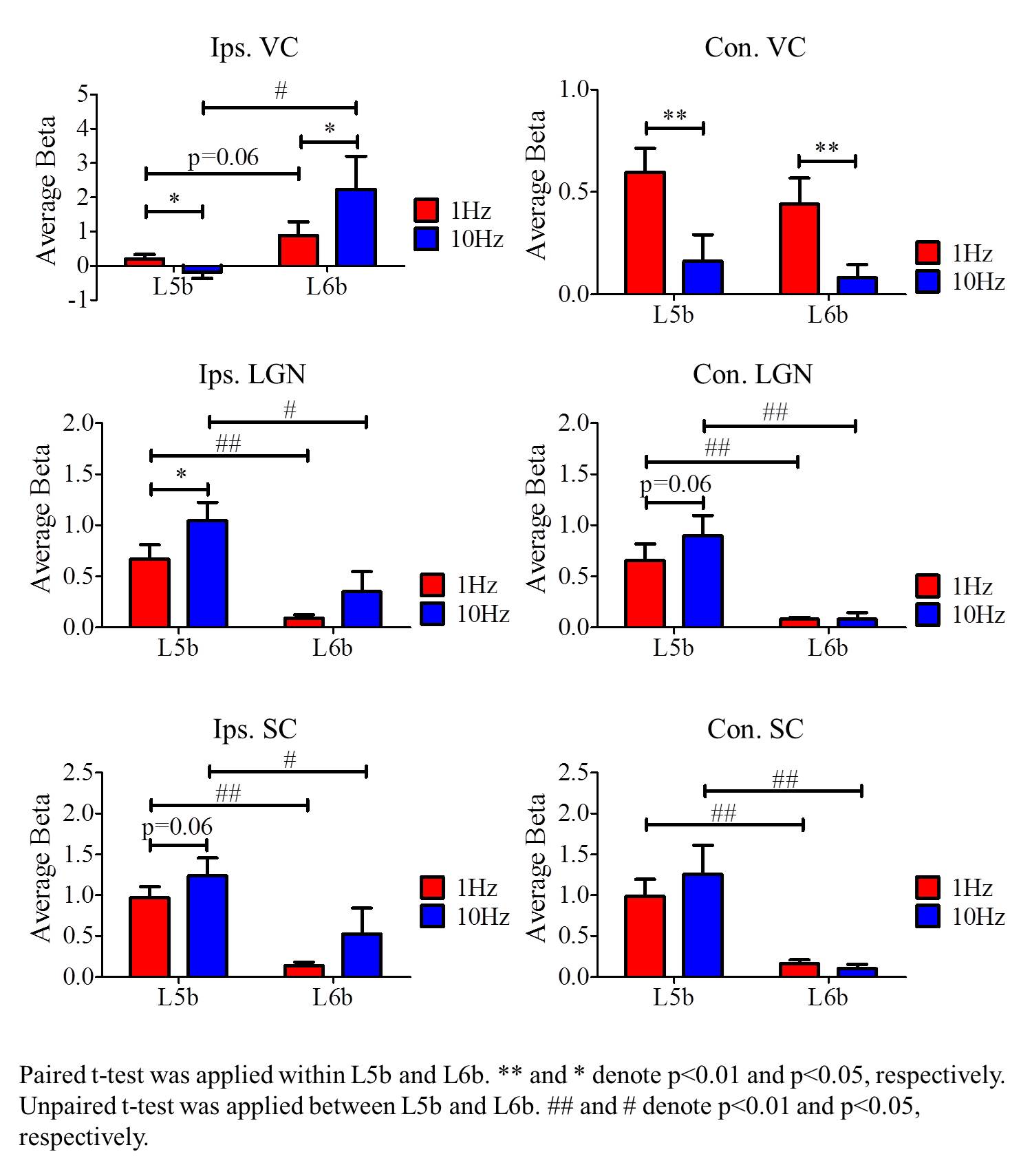
Auditory fMRI
Combining OG with auditory fMRI is a feasible method for investigating cortical descending modulation of auditory midbrain processing.
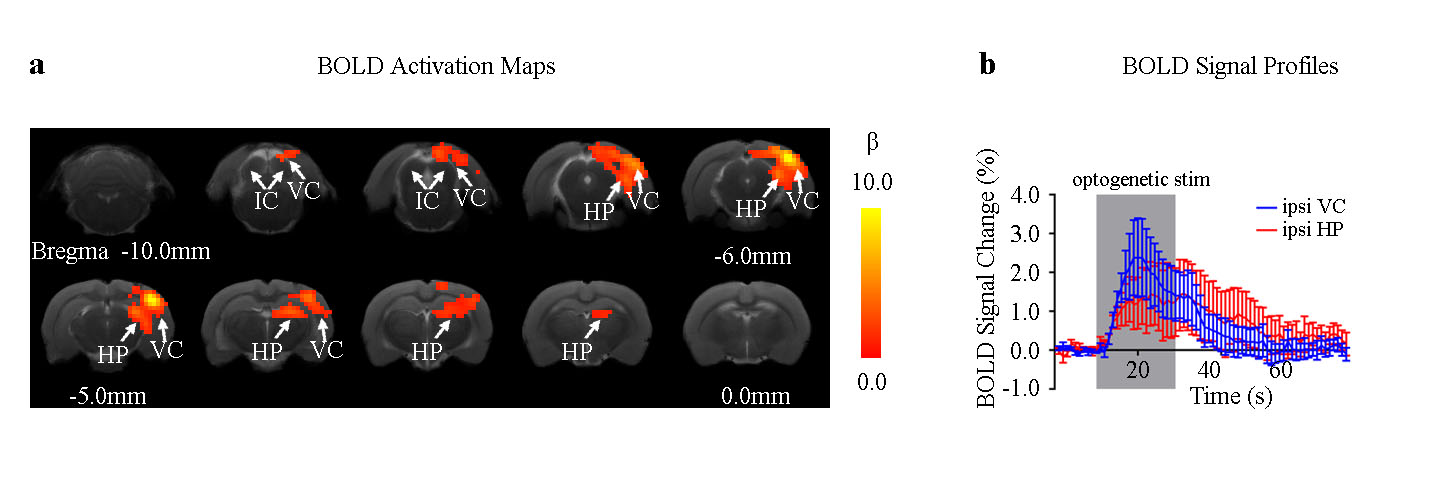
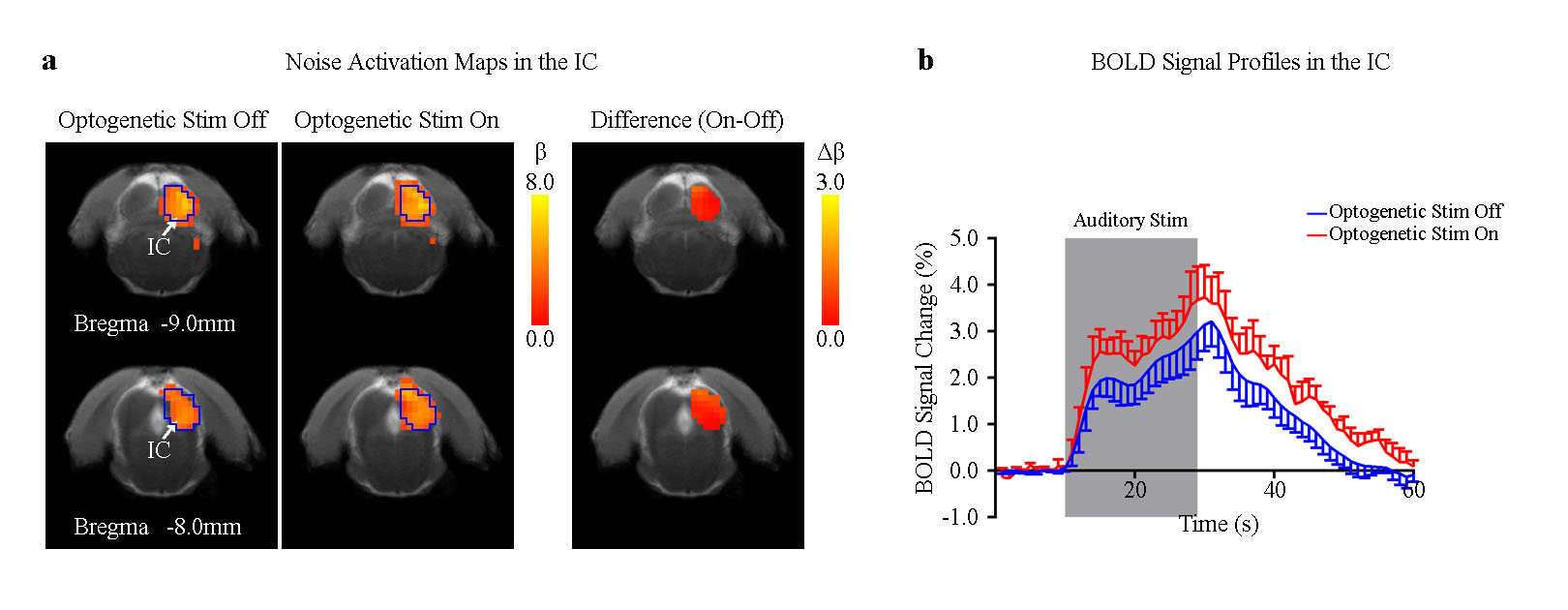
Results indicate that 10 Hz OG stimulation enhances BOLD response to noise in IC, and no significant modulation effects by 1 Hz OG stimulation.